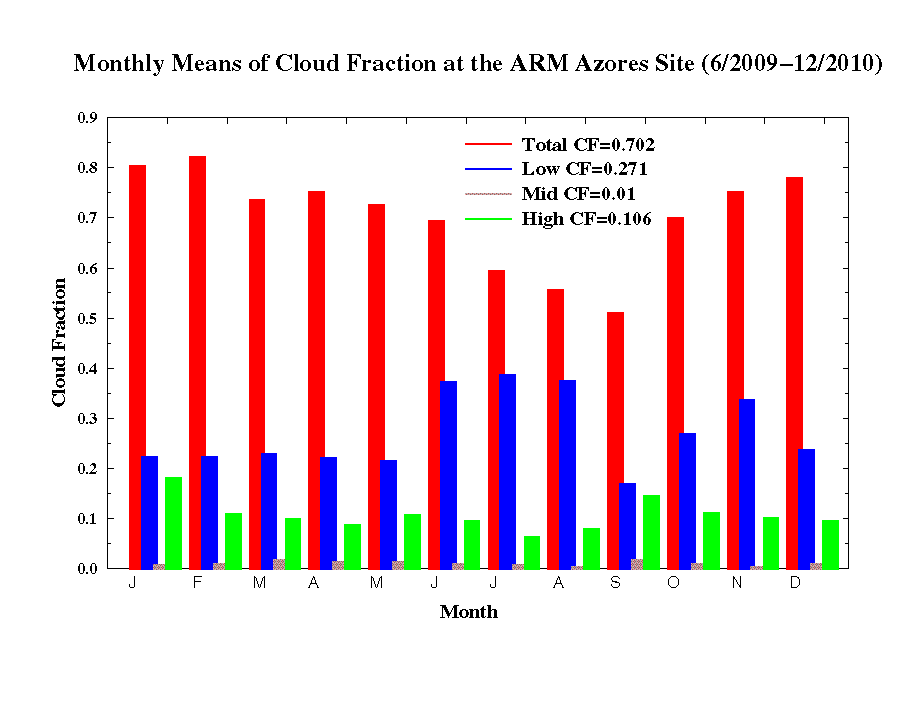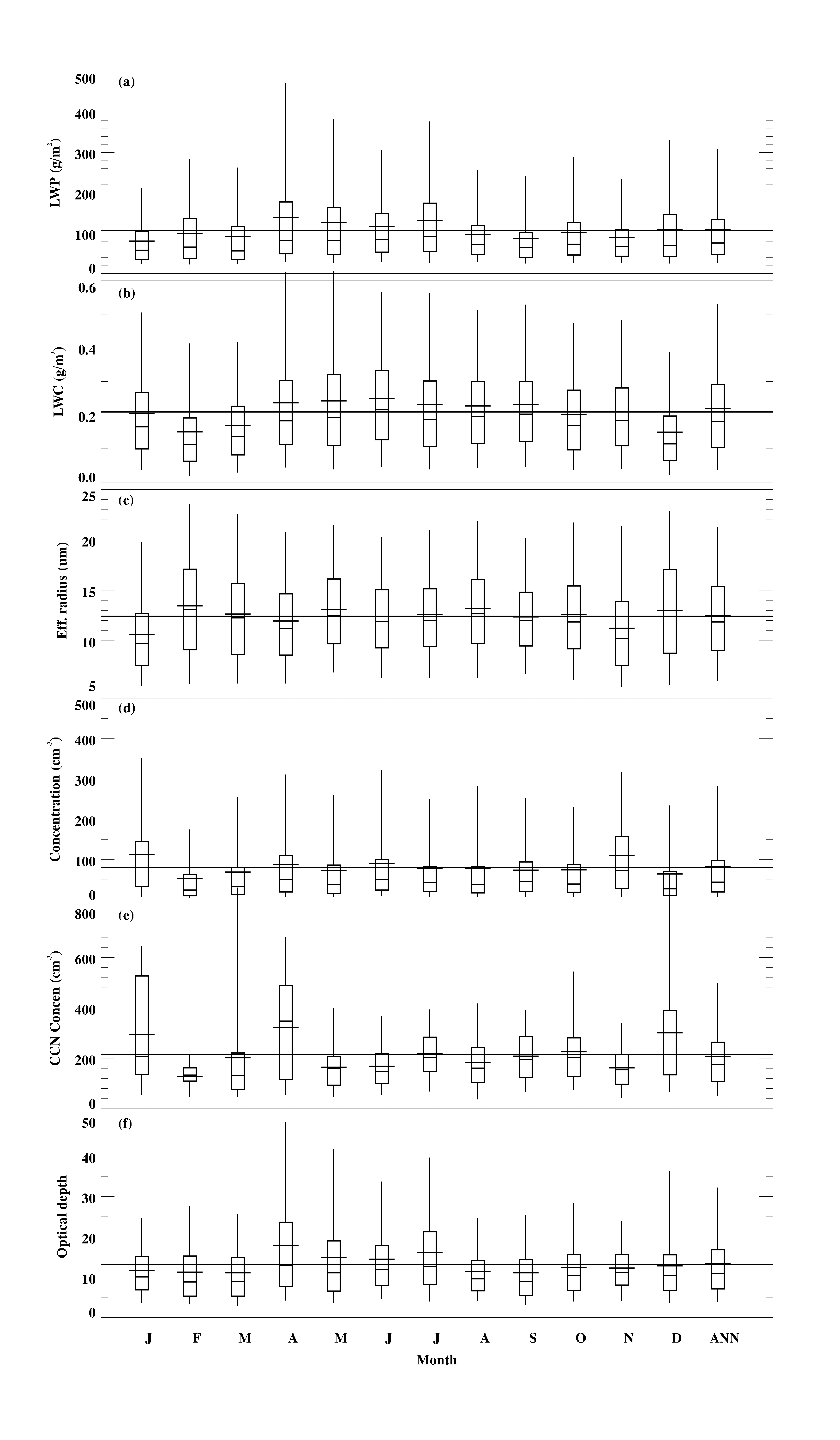MBL Cloud Properties derived from the Azores-AMF Observations
Submitter:
Dong, Xiquan — University of Arizona
Area of research:
Cloud Processes
Journal Reference:
Science
Between June 2009 and December 2010, at the ARM Azores site, a 19-month record of total, single-layered low (< 3 kilometers), middle (3-6 kilometers), and high (> 6 kilometers) cloud fractions (CFs), and the single-layered marine boundary layer (MBL) cloud macrophysical and microphysical properties was generated from ground-based measurements. This is the most comprehensive data set of marine cloud fraction and MBL cloud properties.
Impact
As shown in Figure 1, the annual means of total CF, and single-layered low, middle, and high CFs derived from ARM radar-lidar observations are 0.702, 0.271, 0.01, and 0.106, respectively. Greater total and single-layered high
(> 6 kilometers) CFs occurred during the winter, while single-layered low
(< 3 kilometers) CFs were more prominent during summer. Diurnal cycles for both total and low CFs were stronger during summer than during winter. The CFs are bimodally distributed in the vertical with a lower peak at ~1 kilometers and a higher peak between 8 and 11 kilometers during all seasons, except summer, when only the low peak occurs. Persistent high pressure and dry conditions produce more single-layered MBL clouds and fewer total clouds during summer, while the low pressure and moist air masses during winter generate more total and multi-layered clouds and deep frontal clouds associated with mid-latitude cyclones.
Summary
The seasonal variations of cloud heights and thickness are also associated with the seasonal synoptic patterns. The MBL cloud layer is low, warm, and thin, with large liquid water paths (LWP) and contents (LWC) during summer. During winter, it is colder and thicker, with reduced LWP and LWC (Figure 2). The cloud LWP and LWC values are greater at night than during daytime. The monthly mean daytime cloud droplet effective radius re values are nearly constant, while the daytime droplet number concentration Nd basically follows the LWC variation. There is a strong correlation between cloud condensation nuclei (CCN) concentration (NCCN) and Nd during January through May. This is probably due to the frequent low-pressure systems. Upward motion brings more surface CCN to cloud base (well-mixed boundary layer). During summer and autumn, the correlation between Nd and NCCN is not as strong as that during January through May because the downward motion from high-pressure systems predominates. Compared to the compiled aircraft in situ measurements during the Atlantic Stratocumulus Transition Experiment (ASTEX), the cloud microphysical retrievals in this study agree well with historical aircraft data. Different air mass sources over the ARM Azores site have significant impacts on the cloud microphysical properties and surface CCN as demonstrated by great variability in NCCN and cloud microphysical properties during some months.



